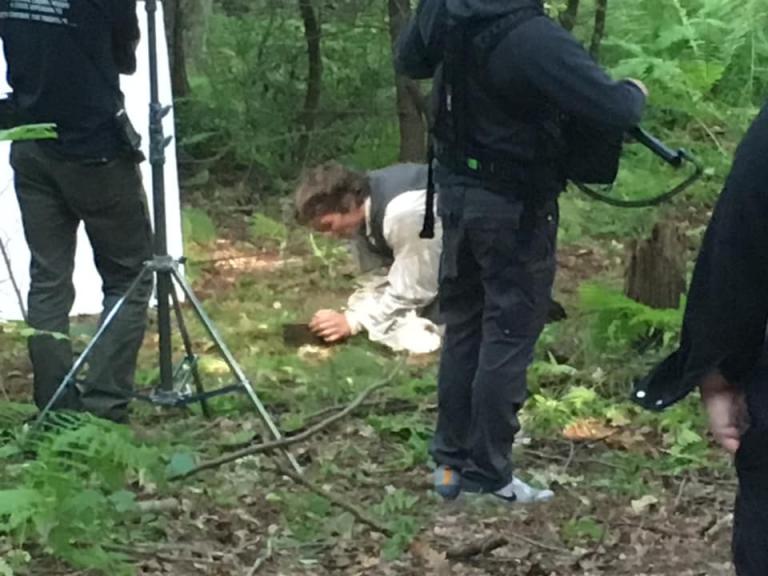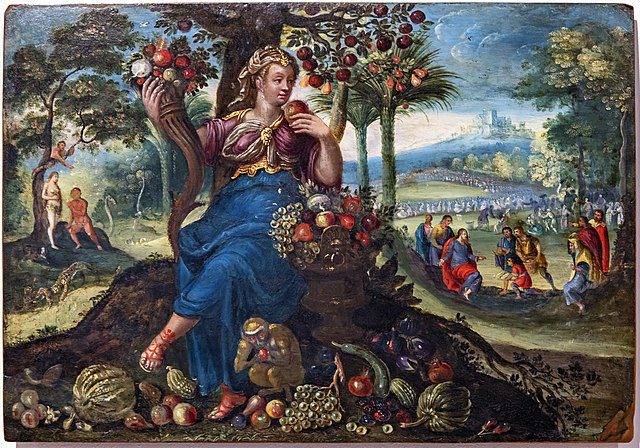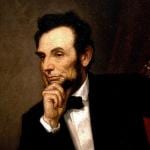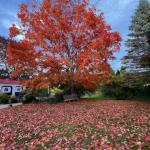
(Still photograph by James Jordan)
I’m finally finding a few stolen moments in which to begin reading Richard Lyman Bushman’s newest book,
As his [Joseph Smith’s] account made clear, the plates were both of the earth and of heaven. They were mundane, material, historical, on the one hand, and divine, mysterious, holy, on the other. . . .
In Joseph Smith’s account of getting the plates, a glorious angel appears out of heaven and tells him about their location. He wears robes of “exquisite whiteness” and stands in the air, his feet not touching the ground. When he leaves, the angel ascends through “a conduit open right up into heaven.” But this luminous being does not bring the plates with him as he presumably would if the plates had been stored in heaven. Instead, Smith has to walk to the hill, scrape away the dirt, use a lever to elevate the stone, and exert himself to lift the plates out of the box where they had lain for centuries. When he finally gets the plates, he has to lug them home — dislocating his thumb when an assailant attacks him — and find a box to store them. Their materiality is emphasized in nearly every detail of the story. The object he carried home was both holy and ethereal and earthly and material.
The plates’ double nature was evident for the twenty-two months Joseph possessed them. On the one hand, they were troublesome to care for. He had to hide them in various places: a wooden box, under the floorboards, in flax in the loft, in a barrel of beans, in the woods, under the bed covers, wrapped in a linen cloth. The accounts of translation always noted where the plates were hidden. On the other hand, they were at the center of the mysterious process of translation by which an inspired text flowed from Smith’s mouth as scripture. . . .
For Joseph Smith himself, the plates’ double nature was more troublesome, especially the earthly part. Had he only claimed to see God in the woods, Smith would have been lumped with all the others who claimed to see heavenly beings throughout history. If he had published the Book of Mormon as a text received by inspiration, he would have been one more poet and visionary like William Blake who wrote under divine influence. It was not the claims to divine revelation that led to trouble. It was the claim to possess early plates dug from a hill and kept in a wooden box. Visions were possible; gold plates found in a hill were not. From an outsider’s perspective, the plates had to have been contrived to deceive people. They turned Smith into a charlatan. (pages 3-4, 5)
I agree completely. The plates, in my view, force the choice: Was Joseph Smith a genuine prophet, or was he a deliberate con-artist? There is no real room here for viewing him as a sincere but chuckleheaded loon.
An academic friend who knew a great deal about the Church and wanted to be sympathetic once asked me many years ago what the point of the golden plates was if, as some accounts seem to suggest, Joseph didn’t need to have them right with him while he was dictating. I replied that I couldn’t really speculate, but that one thing was clear: They’re a major obstacle to people who, like my friend, want to accept Joseph as a sincerely religious man while rejecting his claimed experiences as not literally true.
Incidentally, Brother Bushman expresses similar sentiments to those above in part of his interview for Undaunted: Witnesses of the Book of Mormon.

I wrote this column for the Deseret News at Thanksgiving 2016:
It’s not insignificant that the verbs “to think” and “to thank” (compare German “denken” and “danken”) share the same linguistic root. The scriptures are replete with exhortations to “remember,” to reflect, to thank:
“O give thanks unto the Lord,” says the psalmist (105:1-5), “call upon his name: make known his deeds among the people. Sing unto him, sing psalms unto him: talk ye of all his wondrous works. Glory ye in his holy name: let the heart of them rejoice that seek the Lord. . . . Remember his marvellous works that he hath done; his wonders, and the judgments of his mouth.”
Even secular-minded people should pause occasionally to consider the blessings that we enjoy. We live in a universe, for example, that’s seemingly fine-tuned for our arrival, on a privileged planet where the conditions are primed for life.
But those conditions have existed throughout history. Today, though, most Americans live in unprecedented luxury of which even kings couldn’t have dreamed a few generations ago. Royal castles were drafty and cold then, and lacked plumbing. For us, by contrast, if the weather is too hot, we turn the air conditioning on. If it’s too cold, we have central heating.
We can, if we choose, enjoy an unimaginably rich cuisine—American one day, Chinese the next. Mexican, Thai, Indian, Japanese, French, Italian. We eat a variety of fruits and vegetables, without regard to season. The diet of a Renaissance prince was poor and monotonous compared to the offerings of a typical American supermarket.
For most of us, hunger and starvation aren’t the issue; our problem is actually having too much. (Of course, that’s not true of everybody, and now our challenge is to share with those most in need and, ideally, to bring them and others up to a better standard of living.) If anything, the traditional Thanksgiving feast has lost a bit of its “specialness” because many of us eat pretty well all the time. (One of my students tells me, though, that she’s looking eagerly forward to what she calls “non-ramen Thursday.”)
Our technology, our labor-saving devices, would astonish our ancestors. We travel at unimaginable speeds in unthinkable comfort; we’re upset if our flight is delayed for thirty minutes, and irritated when we’re handed pretzels rather than peanuts or obliged to sit in a middle seat.
We listen to the Berlin Philharmonic or to the latest rock or country tunes wherever and whenever we want. We communicate cheaply and instantaneously at great distances. The world’s knowledge is available to us with a few clicks. We watch movies on demand, whenever we choose. In our own homes. Whereas earlier generations were obliged to work from sunrise to sunset in order to survive, we worry about whether we’re getting enough exercise.
Many of the diseases that once carried us off can be cured with simple medicines; other ailments can be fixed with routine procedures. Death still takes us eventually but, on the whole, we live pretty well until it does. When our hearing falters, we have hearing aids. We keep our teeth, or else we replace them—along with our hips and our knees. Have you ever thought to be grateful for your glasses or contact lenses? Perhaps you should. What would your life be like without them?
Latter-day Saints, though, have specific reasons to be thankful, reasons that go far beyond material comforts and technological marvels.
The restoration of the gospel in the early nineteenth century provides modern corroboration of the biblical stories. It testifies of Christ’s atoning sacrifice and of his resurrection from the dead, gracious gifts from a loving Father and his selfless Son. Because Christ rose, we too will rise, and the ordinances of the gospel link generations together for all eternity. Life wins. Love wins. The restored gospel tells us of the plan of salvation, a plan of happiness that suffuses our lives with rich and deep meaning. It teaches us of a Heavenly Father who wants us to inherit everything that he has.
“O give thanks unto the Lord,” sings the Psalmist, “for he is good: for his mercy endureth for ever” (Psalm 107:1)
Moreover, the restored gospel teaches us that—like God, who seeks to share everything he has with his children—we should share our abundance with our brothers and sisters. At this season, as at all others. “Be ye therefore perfect, even as your Father which is in heaven is perfect” (Matthew 5:48).

And this one appeared in the Deseret News for Thanksgiving 2017:
“If you wish to make an apple pie from scratch,” the late American astronomer and science popularizer Carl Sagan once quipped, “you must first invent the universe.”
As Americans enjoy their Thanksgiving dinners today, many of those dinners will include apple pie. But any other food would serve to make Sagan’s important point.
Unless we ourselves grew the apples and grains and other ingredients vital to our apple pie, we can’t really claim to have made it from scratch. After all, those components came to us via complex and varied trade networks, from widely scattered farms.
Moreover, the hardworking farmers who grew our apples and the grains for our piecrusts didn’t create them out of nothing. They came from pre-existing seeds.
Lest this column rapidly grow far too complicated, though, we’ll concentrate only on the apples:
Rev. William Blaxton planted the first apple orchard in North America in Boston, in 1625. But apples had already been grown in Asia and Europe for millennia. In fact, the apple tree, which originated in Central Asia, may have been the earliest tree ever cultivated.
Where do apple trees come from, ultimately? The origin of life on Earth as a whole remains a mystery; science doesn’t know how or whence it arose. But apples are very far from simple or primitive organisms. The apple genome, its genetic material, may contain more genes than any other plant genome yet analyzed, and perhaps even more than the human genome does. But even a single gene is a remarkable thing. Unlike the machines that humans create, DNA—the hereditary material in cells—has the capacity to reproduce itself. Planting a Porsche or a hammer doesn’t yield new craftsman’s tools or sports cars. Apple trees, though, produce seeds that, in their turn, yield new apple trees.
This would all be irrelevant, of course, had chemical and biological processes not created soil in which to plant apple seeds. Moreover, according to some current science, that soil wouldn’t have contained key ingredients for the chemistry of life—elements such as hydrogen, oxygen, nitrogen, phosphorus and sulfur—if they weren’t regularly replenished by the constant movements of the tectonic plates that cover Earth’s surface. (In other words, you may owe your apple pie to the same forces that cause earthquakes.)
There would be no soil, though, no tectonic plates and neither apples nor apple pie if there were no Earth. Where did it come from? Our solar system formed roughly 4.6 billion years ago and, shortly thereafter, the Earth began to coalesce.
Ultimately, of course, the genesis of apples is to be found in the Big Bang, which occurred (for reasons that may lie forever beyond the reach of science) about 13.7 billion years ago.
But the path from the Big Bang to the appearance of life (and apple pies) on Earth is paved with remarkable facts. Somehow, only a fraction of a second after that unimaginable explosion, nature’s fundamental forces were established—in ways that make life possible. If, for example, gravity differed even slightly—making you weigh a billionth of a gram more or less than you do—or if the universe’s expansion rate were even slightly slower or faster, or if the overall density of the cosmos varied by as little as 0.0000000000001%—roughly the same precision required for a blindfolded man to choose a single predesignated coin from a pile of pennies sufficient to pay off the national debt of the United States—either a “Big Crunch” would shortly have followed the Big Bang or, alternatively, atoms would have scattered so widely that neither galaxies, stars, planets nor apples could have formed.
Sir Fred Hoyle (d. 2001), an illustrious astronomer and a vocal atheist, conducted path-breaking research into the indispensable role that stars played in the synthesis of all the chemical elements heavier than helium—including carbon—without which life (and apple pie) would be impossible. What he found shocked him deeply:
“A commonsense interpretation of the facts,” he commented, “suggests that a super-intellect has monkeyed with physics, as well as with chemistry and biology, and that there are no blind forces worth speaking about in nature. The numbers one calculates from the facts seem to me so overwhelming as to put this conclusion almost beyond question.”
Making apple pie absolutely from scratch is plainly more difficult than most of us have imagined. Downright mysterious, in fact. Praise God, from whom all blessings flow.
Posted from Richmond, Virginia













